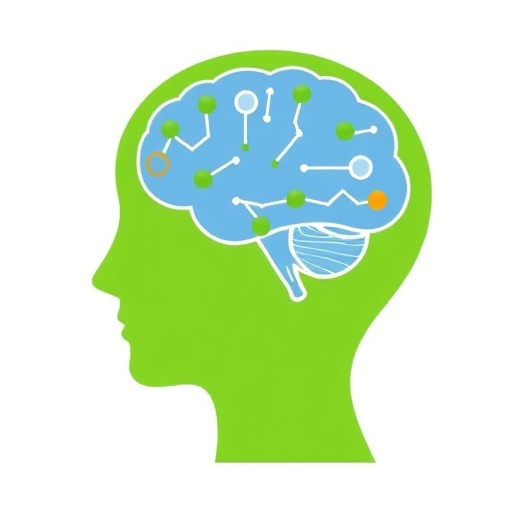The intricate relationship between attention and arousal has long captivated researchers, particularly in the context of autism spectrum disorders (ASD). A recent study led by researchers Jiang and Liu sheds new light on this relationship, focusing on how color serves as a specific stimulus that can decouple attention and arousal in autistic children. The findings, anticipated to make waves in both the scientific community and beyond, are encapsulated in their paper titled “Bright Lights, Silent Signals: Colour-Specific Attention–Arousal Decoupling in Autistic Children Revealed by Eye-Tracking and Pupillometry,” published in the Journal of Autism and Developmental Disorders.
The researchers utilize advanced techniques such as eye-tracking and pupillometry to explore the subtleties of visual attention in children with autism. Eye-tracking technology allows scientists to monitor where and how long individuals focus their gaze, providing a wealth of data on attentional processes. Pupillometry, measuring pupil dilation, serves as a physiological indicator of arousal levels, thus offering insights into the emotional engagement of participants. This dual approach enables the researchers to disentangle the complex interplay between attention and emotional stimuli.
In their work, Jiang and Liu emphasize the importance of color as a variable that has been understudied in autism research. Previous studies have predominantly focused on geometric shapes and other non-color stimuli, potentially overlooking the vivid and emotionally charged world of color. The researchers argue that color not only captures attention but also serves as a direct stimulus for arousal, varying significantly in its effect based on the individual’s neurocognitive profile.
When autistic children were exposed to a variety of colored stimuli, the data revealed striking differences in behavioral responses and physiological reactions. For example, the researchers found that while typical children displayed consistent patterns of attention and arousal across different colors, the responses of autistic children were starkly different. Certain colors evoked marked increases in arousal without a corresponding increase in attentional engagement, suggesting a unique decoupling of these two critical processes.
This phenomenon raises critical questions about how individuals with ASD process sensory information differently from their neurotypical peers. The implications of these findings extend beyond academic curiosity; they hold the potential to inform educational strategies and therapeutic interventions that cater specifically to the sensory processing needs of autistic children. For instance, classrooms could be redesigned with careful color selections that promote better focus and emotional well-being for students on the spectrum.
Moreover, the study opens avenues for future research into color as a meaningful variable in understanding not just autism, but a broader spectrum of neurodiversity. By further investigating how colors interact with other sensory modalities, researchers may gain valuable insights into the broader mechanisms of attention and arousal regulation across different populations.
In the context of therapeutic practices, understanding the unique responses of autistic individuals to color stimuli can inform art and sensory therapies. Use of specific hues known to incite calming effects could be integrated into therapeutic sessions to tailor experiences that promote positive emotional and cognitive outcomes.
Furthermore, the findings underscore the need for an individualized approach in diagnosing and supporting children with ASD. Knowing that emotional responses can be driven significantly by color can lead clinicians to adopt more nuanced diagnostic tools that consider a child’s sensory profile, ultimately leading to better-targeted interventions.
Social implications arise from the research as well; parents and educators alike can be informed by these findings, leading to more empathetic and effective interactions with autistic children. Understanding that a child’s emotional state may not only be about their direct response to a situation but also their visual-environmental stimuli opens new pathways for cultivating safe and engaging environments.
There is a broader cultural critique embedded in this research. The perception of color isn’t merely scientific; it is profoundly social and psychological. The research suggests that societal attitudes towards color could inadvertently marginalize or empower children with autism, depending on their unique responses to these stimuli. A society that understands color’s complex interplay with cognition may be more inclined to create inclusive environments.
Additionally, this study encourages a reevaluation of colors used in media that targets children, from educational shows to toys. Brands designing for inclusivity now have a scientific basis to reconsider their color palettes, ensuring that children of all neurocognitive profiles engage positively with their products, advocating for an inclusive marketplace.
The study’s revelations could also affect policy on public spaces, wherein colors employed in designs can have significant impacts on the emotional and attentional engagement of individuals, particularly those on the spectrum. Urban planners and designers may begin to harness this knowledge to create environments that are not only aesthetically pleasing but also inclusive and supportive of neurodiversity.
Overall, the work of Jiang and Liu represents a significant leap in understanding the nuanced relationship between sensory stimuli and cognitive processes in autistic children. As research continues to push the boundaries of neurodiversity studies, we can expect to see more innovative methodologies and conceptual frameworks emerging, paving the way for a deeper comprehension of the human experience across the spectrum.
In conclusion, “Bright Lights, Silent Signals” offers crucial insights into the intersection of color, attention, and emotional arousal in autistic children. It implores researchers, clinicians, educators, and society at large to take a more informed and nuanced approach to the experiences of individuals on the autism spectrum. As we move forward, embracing the intricacies of sensory processing will not only enhance our academic pursuits but cultivate more compassionate and inclusive communities.
Subject of Research: Attention and arousal mechanisms in autistic children using color stimuli.
Article Title: Bright Lights, Silent Signals: Colour-Specific Attention–Arousal Decoupling in Autistic Children Revealed by Eye-Tracking and Pupillometry.
Article References: Jiang, W., Liu, F. Bright Lights, Silent Signals: Colour-Specific Attention–Arousal Decoupling in Autistic Children Revealed by Eye-Tracking and Pupillometry. J Autism Dev Disord (2025). https://doi.org/10.1007/s10803-025-07100-7
Image Credits: AI Generated
DOI: https://doi.org/10.1007/s10803-025-07100-7
Keywords: Autism, Attention, Arousal, Eye-Tracking, Pupillometry, Color Stimuli, Neurodiversity, Sensory Processing, Emotional Engagement, Educational Strategies, Therapeutic Interventions.
Tags: advanced techniques in autism studiesattention and arousal in autismautism spectrum disorders researchcolor as a stimulus in autismcolor-related attention in autistic childrendecoupling attention and arousal in autismemotional stimuli and attention in ASDeye-tracking technology in autism researchimplications of color in autism researchJiang and Liu autism studypupillometry and emotional engagementvisual attention in children with autism





